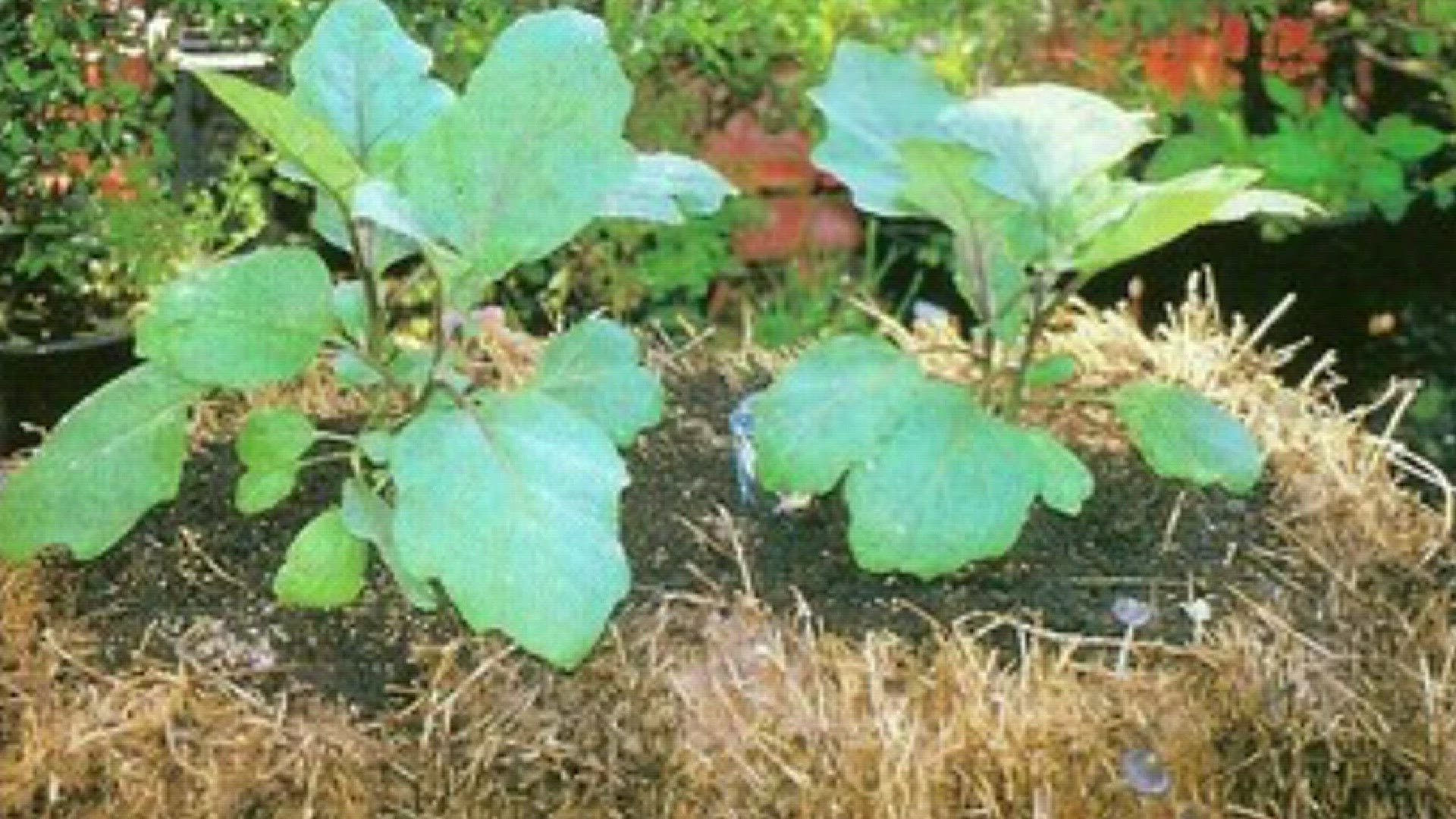What if you could grow a garden anywhere, even in poor soil or on concrete, and you never have to do any weeding? Sounds too good to be true, doesn’t it. But it’s the latest gardening technique that’s fast becoming popular around the country.
Garden master Jim Duthie tells us all about straw bale gardening, and how it might just be the thing for you.
There are lots of ways to grow a garden. Some of us plant our gardens the traditional way, right in the ground.
Others like to use raised garden beds and garden boxes. Still others plant flowers and vegetables in containers of all different kinds. And hydroponics offers a way to grow a garden without any soil at all.
Now comes the latest trend in home gardening – growing your plants in bales of straw.
“All it takes is a bale of straw, water and some fertilizer, and you’re ready to get a garden started anywhere.”
Mike Williams has been growing gardens for most of his life. This year, as he was getting his garden going the traditional way, a friend suggested that he give straw bale gardening a try.
“I’ve always tried to grow big watermelons and I tried to find a better way to do that, and so we’ll give it a try,” Williams said.
The idea behind straw bale gardening is simple. Plants grow in the top of the straw, which begins decomposing as soon as it gets wet. As the straw breaks down, it turns into a rich, compostable planter that’s ideal for growing vegetables.
The advantage of straw bale gardening is that you can set the bales anywhere where it’s sunny, as long as you can keep it watered. poor soil? it doesn’t matter. you can even set the straw bales on a concrete driveway.
the first step – get a bale of straw. you can find them at most garden centers and feed stores for under ten-dollars.
“I just got these from a farmer. My uncle, he’s got a bunch of cows, and he buys a bunch in the winter time. And I had him pick me up a few extra and brought them out here.”
Straw is best, because hay will sprout and may also contain other seeds that can produce grass and weeds. These bales that Mike got from a farmer friend contain wheat, so they are sprouting a bit, but only on the sides of the bales, and it’s easy to pull it out.
“Oh, straw over alfalfa. Like we were saying earlier, because they just have a bunch of weeds and stuff in it, plus alfalfa will sprout. But the wheat, that’s not going to hurt anything from what I can see. You can just pull those out as they go along.”
Set the bale in a sunny place, positioned on its narrow side, so the twine isn’t in the way. It’s also recommended to post stakes on the ends of the bale to keep it from sagging and spreading out.
“They said line them up, you put posts on them so they don’t, if the string breaks they won’t fall out and come apart.”
Next, the bale needs to be conditioned before you can plant, a process that will take from 10 to 14 days. For the first three days, water the bale completely and keep it wet. The straw will start to decompose as soon as it gets wet, and the bale will begin to heat up inside, too hot at this point for any plants to grow in it. Adding some liquid fertilizer will speed up the process over the next several days.
Check the temperature inside the bale with a compost or meat thermometer. After a few days it will start to cool down to the same temperature as the air outside, and you’re ready to start planting.
If you are planting bedding plants or vegetable starts, create a hole in the top of the straw and place the plant in it. Then just keep it watered.
If you’re planting seeds, add a layer of a couple of inches of seed starting mix or potting mix, and then plant the seeds in it.
“And that’s what I did and I put a couple of inches layer of soil on there, and then planted my seeds in here.”
In this bale, Mike’s pumpkins are just starting to sprout. But soon they’ll grow into full-sized pumpkin plants and trail over the edge of the bale onto the ground.
The advantages of bale gardening include being able to set up a garden almost anywhere, and there’s less physical labor involved – no bending, digging or weeding. And at the end of the season, the bales can be recycled right back into the garden.
“Yeah, that’s one of the big pluses, is you don’t have the weeds to deal with.”
It’s early enough in the season that you can start a straw bale garden now. Meanwhile, we’ll follow up with Mike as the season goes on and see how his melons and pumpkins are doing in their straw bales, and we’ll show them to you on another ‘You Can Grow It’ later on.
So whether you grow flowers or vegetables, in the ground or in containers, straw bale gardening gives you another option.
The practice of gardening in straw bales dates back to ancient times, but it has become more popular among home gardeners in recent years.
For more information on straw bale gardening, and some step-by-step instructions to get started, here are links to some websites:
https://strawbalegardens.com
Books:
Straw Bale Gardens, Straw Bale Gardening, and Straw Bale Gardens Complete by Joel Karsten

